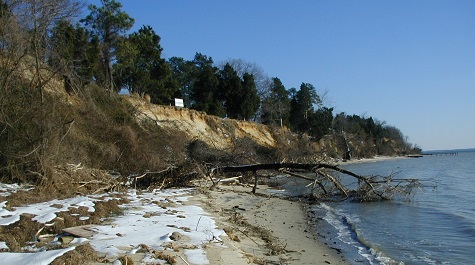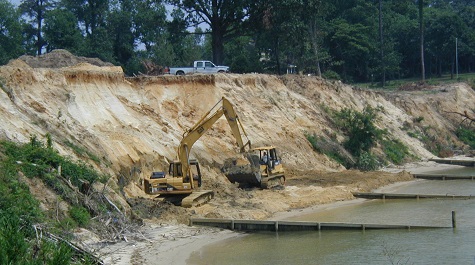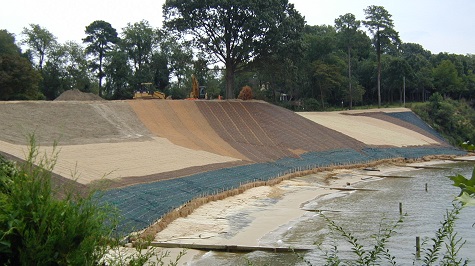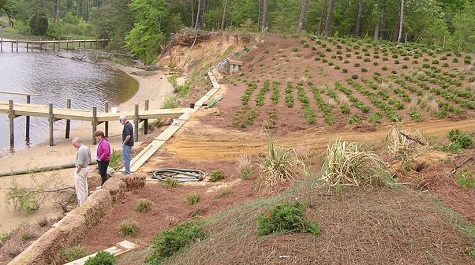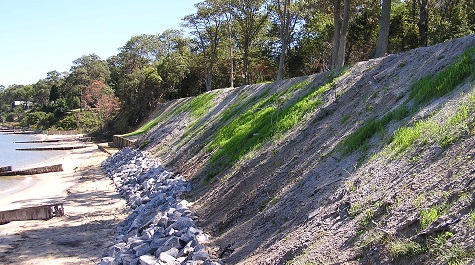Bank Grading
The objective of bank grading is to reduce the steepness of the bank slope and decrease erosion caused by waves striking the bank toe. A more gradual slope allows for wave “run-up” and dissipation of wave energy and there is a better foundation for vegetation growth. Graded banks should be stabilized with native plants that hold soil in place, intercept surface and sub-surface runoff and absorb energy from storm waves. This process can be combined with planted marshes or erosion control structures for increased effectiveness.
Suitable Sites
- Active erosion at top and toe of bank
- Low cleared banks with lawns
- Unstable high banks with undercut or falling trees
- Unstable banks adjacent to tidal marshes
- No adjacent bulkheads, revetments or upland improvements in close proximity
- Plenty of sunlight will reach graded slope
Guidelines for Bank Grading
- Consider grading only the top or toe of the slope to minimize land disturbance
- Consult with local Chesapeake Bay Preservation Act authorities, Water Quality Impact Assessment and replacement trees and other landscaping may be required
- Coordinate with adjacent property owners in advance, gradual transitions to adjacent grades may be needed
- Construction access must be available, temporary stockpile areas may be needed
- The target slope should be as flat and gradual as possible to support vegetation growth and no steeper than a 3:1 slope
- Determine if bank sediments might be suitable for beneficial shoreline uses
- Re-direct and manage upland runoff away from the graded bank
- Use temporary erosion control mats, blankets and fiber logs for stabilization until vegetation is established
- Landscape restoration design should incorporate native plants suited to local soil, sunlight, salt and wind conditions; non-native plants should be adapted to similar conditions

